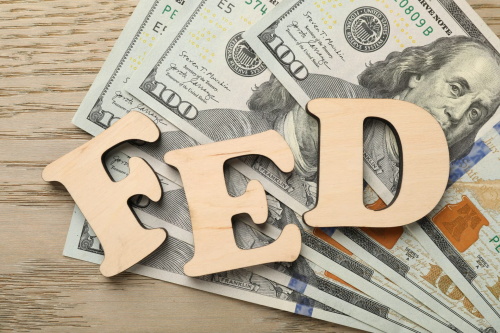Fed’s Delayed Rate Cuts: Is October the New June?

Just a few months ago, markets were eagerly counting down to a June rate cut by the Federal Reserve. The mood felt festive, confidence was high, and consensus was strong: “Three rate cuts this year—no question about it.” But reality had other plans.
From “three cuts totaling 75 basis points” to “no cuts at all might be normal,” market expectations have reversed faster than spring weather. This sudden chill wasn’t random—it was the result of a series of unexpected events and data shocks.
Inflation Returns, Confidence Retreats
The turning point began with a sharp rise in U.S. consumer inflation expectations. In spring, expectations spiked to 3.9%, the highest since 1993. That single data release triggered an immediate retreat from rate-cut bets.
Then came a bigger surprise: the Trump administration announced new tariffs. This bombshell threw markets off balance. Business confidence dropped, inflation expectations jumped again, and the clear path to rate cuts suddenly lost direction.
Meanwhile, the Fed stayed silent. No soothing policy moves, no dovish signals—Chair Jerome Powell simply repeated the mantra: “data-dependent.” The market was left to digest the shock on its own, with some joking, “Powell’s patience is more stubborn than inflation.”
Monetary Policy: Holding the Line
On May 7, the Fed held interest rates steady at 4.25%–4.50%—the third time this year it has stood still.
Wall Street quickly recalibrated. Goldman Sachs pushed its first rate cut forecast to December. Barclays moved from July to year-end. Futures markets hit the brakes. Now, the question isn’t when the Fed will cut rates, but if it will do so at all in 2025.
The Fed’s Tightrope: Caught Between Inflation and Tariffs
This isn’t the Fed’s first balancing act—but this one is particularly tricky. On one side, inflation remains sticky. Core PCE for Q1 2025 rose at an annualized pace of 3.7%, well above the 2% target. Essential services—like rent, healthcare, and education—are still seeing persistent cost pressures.
On the other side, Trump’s tariff policy looms like a time bomb. If fully implemented, tariffs could drive inflation even higher while undermining business investment and slowing growth. U.S. equities are already feeling the chill: tech stocks have pulled back 11%, and the Nasdaq has posted four straight weeks of declines, as risk appetite fades.
Fed Governor Kugler even warned the tariffs could lead to stagflation—a toxic mix of high inflation and stagnant growth.
A Split-Personality Economy
The U.S. economy isn’t clearly overheating or in recession. GDP growth slowed from 2.8% in Q2 2024 to 1.9% in Q4. Residential investment has declined for six consecutive quarters—that’s the “cold” side.
But the “hot” side isn’t going away. April retail sales rose 0.7% month-over-month, far exceeding expectations. Consumers are still swiping their credit cards. Even Tesla posted a record U.S. sales month in March. This mixed-signal economy is giving policymakers a serious headache.
Global Domino Effect: Fire and Ice
Emerging Markets: Capital Exodus
With Fed cuts off the table, capital is flooding back to high-yielding U.S. assets. Emerging markets took the hit first. On May 20, the Turkish lira fell to an all-time low of 28.7 per dollar. India saw foreign investors pull out $3.2 billion over three weeks. Argentina slipped deeper into debt distress and had to ask the IMF for early disbursements.
Developed Markets: Stuck in a Trap
Europe isn’t faring much better. Eurozone core inflation is at 5.1%—higher than the U.S.—but GDP growth is just 0.8%. German industrial output has declined for three straight months. The ECB wants to cut rates but doesn’t dare, with mortgage rates soaring to 4.8%, the highest since the 2008 financial crisis. Household defaults are rising in the Netherlands and Sweden.
What Should Ordinary People Do?
Investing: Dancing on the Bubble?
The S&P 500’s current price-to-earnings ratio is 19.7—30% above the historical average. Tech giants are priced as if they’ve already banked two years of rate cuts, with valuations north of 30x earnings. If September data fails to justify a pivot, markets could correct 20% or more, with overvalued sectors hit hardest.
Mortgages: Fixed > Adjustable
Today, a 30-year fixed mortgage in the U.S. averages 7.2%, while adjustable-rate mortgages (ARMs) are around 6.5%. The latter may look cheaper, but they’re risky—if the Fed stays put through 2026, monthly payments could soar year after year.
The Key Dates: July and October
The July 31 FOMC meeting won’t feature a dot plot update, but Powell’s press conference will be critical. If he hints that the Fed is evaluating conditions for cuts, markets could ignite another rally—what traders call a “short squeeze.”
But if he doubles down on “data not yet convincing,” then October—or later—becomes the earliest realistic window for action.
Smart Money Is Already Hedging
Options market data shows more investors are now preparing for no cuts at all in 2025. The U.S. yield curve has inverted further, signaling pessimism about future growth.
And even though Powell hasn’t budged in tone, the Fed is subtly adjusting its actions. In April, it quietly reduced the cap on monthly Treasury runoffs from $25 billion to $5 billion—a sign of slower quantitative tightening, possibly laying the groundwork for future easing.
Final Thought: Data Is the Judge
The market is now caught in a web of variables. If core CPI drops below 3.5% in the next few months, with monthly gains under 0.2%, a cut in July—or at least by September—is on the table. But if inflation rebounds, expect a shock to the system.
Powell never said cuts are off the table. But he’s clear: “We follow the data.” Every inflation, jobs, and retail sales report from now on will act as a turning point for global asset prices.
So, when’s the next rate cut? Don’t ask Powell. Don’t ask Goldman.
Ask the next CPI report.



